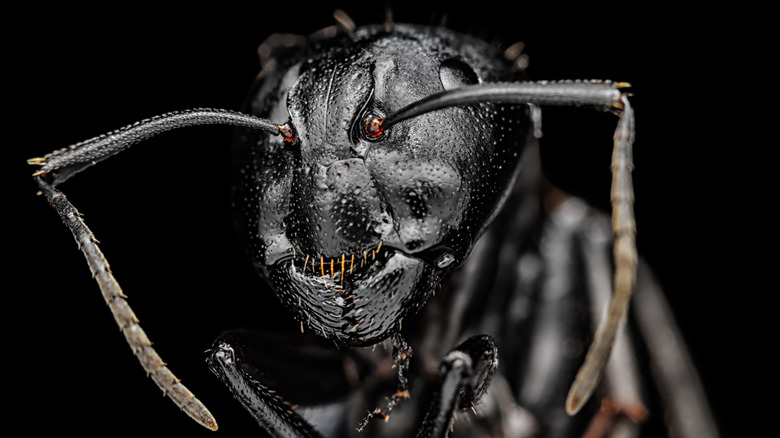What Ants Look Like Under A Microscope Is Terrifyingly Alien
There's something infinitely fascinating about looking at everyday objects under a microscope. Suddenly a whole hidden world opens up and the sense that we ourselves are just part of an endless cosmic scale begins to dawn on us. Then, there are things that when viewed under a microscope are just downright terrifying.
Insects usually fall into that latter category. We're often perturbed by certain insects when we see them in our day to day lives, with spiders especially inducing within many of us a kind of primal fear. Some of that might have to do with the fact there are many types of dangerous spiders out there, but for the most part we're just innately repulsed by anything that might conceivably fall into the creepy crawly category.
But things only get worse when we take a look at insects under a high-powered microscope. Far from revealing an enchanting micro world that had been hiding in plain sight all along, doing so unveils some of the most upsetting images you're likely to see. This is especially true with ants, which we're used to thinking of as tiny, pesky insects that might occasionally ruin a camping trip. But when viewed under a microscope, ants are nothing short of nightmarish.
Ants in closeup are pure nightmare fuel
Ants are remarkable and yet also kind of terrifying. Their uncanny ability to coordinate to protect themselves despite their miniscule brains not withstanding, their head morphology is truly bizarre and has several distinguishing features that contribute to their disturbing appearance.
Front and center are their strong mandibles which they use to defend themselves and to lift and carry objects which can weigh much more than they do. The eyes, meanwhile, sit at the very top of the head and are made up of multiple individual lenses, with different species of ant having a different number of lenses. Their eyesight isn't as developed as it might be however, which is why they need some help navigating the world. Below the eyes are two antennae, which sit on either side of the head and act as sensory organs. Not only do they help ants see, they also enhance hearing and taste. Ants also have unique tongue which they launch out of their mouths using blood pressure in order to drink and clean themselves.
That all might sound quite interesting, but seeing this head anatomy and all its ant adaptations in close-up really is unsettling. In 2022, Lithuanian photographer Eugenijus Kavaliauskas used a microscope at 5 times magnification to capture an ultra-closeup image of the mandibles and antennae of a carpenter ant. The resulting image looked less like an insect and more like some eldritch beast summoned from another dimension. Then, in 2023, the University of New Hampshire published an image of a leafcutter ant from Ecuador produced using an electron microscope, and while it's slightly less unnerving than Kavaliauskas' shot, it still showcases how alien ants look in extreme closeup.

